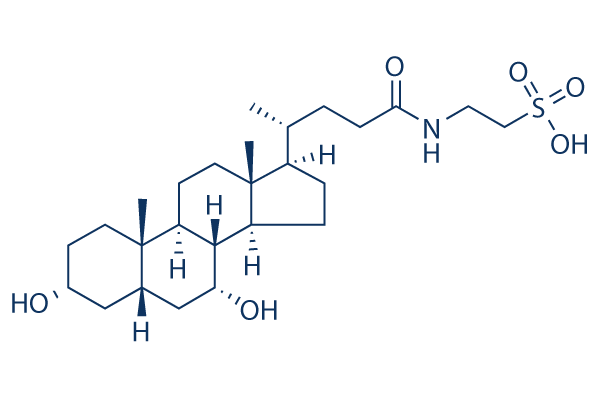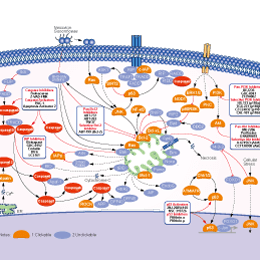
- Bioactive Compounds
- By Signaling Pathways
- PI3K/Akt/mTOR
- Epigenetics
- Methylation
- Immunology & Inflammation
- Protein Tyrosine Kinase
- Angiogenesis
- Apoptosis
- Autophagy
- ER stress & UPR
- JAK/STAT
- MAPK
- Cytoskeletal Signaling
- Cell Cycle
- TGF-beta/Smad
- Compound Libraries
- Popular Compound Libraries
- Customize Library
- Clinical and FDA-approved Related
- Bioactive Compound Libraries
- Inhibitor Related
- Natural Product Related
- Metabolism Related
- Cell Death Related
- By Signaling Pathway
- By Disease
- Anti-infection and Antiviral Related
- Neuronal and Immunology Related
- Fragment and Covalent Related
- FDA-approved Drug Library
- FDA-approved & Passed Phase I Drug Library
- Preclinical/Clinical Compound Library
- Bioactive Compound Library-I
- Bioactive Compound Library-Ⅱ
- Kinase Inhibitor Library
- Express-Pick Library
- Natural Product Library
- Human Endogenous Metabolite Compound Library
- Alkaloid Compound LibraryNew
- Angiogenesis Related compound Library
- Anti-Aging Compound Library
- Anti-alzheimer Disease Compound Library
- Antibiotics compound Library
- Anti-cancer Compound Library
- Anti-cancer Compound Library-Ⅱ
- Anti-cancer Metabolism Compound Library
- Anti-Cardiovascular Disease Compound Library
- Anti-diabetic Compound Library
- Anti-infection Compound Library
- Antioxidant Compound Library
- Anti-parasitic Compound Library
- Antiviral Compound Library
- Apoptosis Compound Library
- Autophagy Compound Library
- Calcium Channel Blocker LibraryNew
- Cambridge Cancer Compound Library
- Carbohydrate Metabolism Compound LibraryNew
- Cell Cycle compound library
- CNS-Penetrant Compound Library
- Covalent Inhibitor Library
- Cytokine Inhibitor LibraryNew
- Cytoskeletal Signaling Pathway Compound Library
- DNA Damage/DNA Repair compound Library
- Drug-like Compound Library
- Endoplasmic Reticulum Stress Compound Library
- Epigenetics Compound Library
- Exosome Secretion Related Compound LibraryNew
- FDA-approved Anticancer Drug LibraryNew
- Ferroptosis Compound Library
- Flavonoid Compound Library
- Fragment Library
- Glutamine Metabolism Compound Library
- Glycolysis Compound Library
- GPCR Compound Library
- Gut Microbial Metabolite Library
- HIF-1 Signaling Pathway Compound Library
- Highly Selective Inhibitor Library
- Histone modification compound library
- HTS Library for Drug Discovery
- Human Hormone Related Compound LibraryNew
- Human Transcription Factor Compound LibraryNew
- Immunology/Inflammation Compound Library
- Inhibitor Library
- Ion Channel Ligand Library
- JAK/STAT compound library
- Lipid Metabolism Compound LibraryNew
- Macrocyclic Compound Library
- MAPK Inhibitor Library
- Medicine Food Homology Compound Library
- Metabolism Compound Library
- Methylation Compound Library
- Mouse Metabolite Compound LibraryNew
- Natural Organic Compound Library
- Neuronal Signaling Compound Library
- NF-κB Signaling Compound Library
- Nucleoside Analogue Library
- Obesity Compound Library
- Oxidative Stress Compound LibraryNew
- Plant Extract Library
- Phenotypic Screening Library
- PI3K/Akt Inhibitor Library
- Protease Inhibitor Library
- Protein-protein Interaction Inhibitor Library
- Pyroptosis Compound Library
- Small Molecule Immuno-Oncology Compound Library
- Mitochondria-Targeted Compound LibraryNew
- Stem Cell Differentiation Compound LibraryNew
- Stem Cell Signaling Compound Library
- Natural Phenol Compound LibraryNew
- Natural Terpenoid Compound LibraryNew
- TGF-beta/Smad compound library
- Traditional Chinese Medicine Library
- Tyrosine Kinase Inhibitor Library
- Ubiquitination Compound Library
-
Cherry Picking
You can personalize your library with chemicals from within Selleck's inventory. Build the right library for your research endeavors by choosing from compounds in all of our available libraries.
Please contact us at [email protected] to customize your library.
You could select:
- Antibodies
- Bioreagents
- qPCR
- 2x SYBR Green qPCR Master Mix
- 2x SYBR Green qPCR Master Mix(Low ROX)
- 2x SYBR Green qPCR Master Mix(High ROX)
- Protein Assay
- Protein A/G Magnetic Beads for IP
- Anti-Flag magnetic beads
- Anti-Flag Affinity Gel
- Anti-Myc magnetic beads
- Anti-HA magnetic beads
- Poly FLAG Peptide lyophilized powder
- Protease Inhibitor Cocktail
- Protease Inhibitor Cocktail (EDTA-Free, 100X in DMSO)
- Phosphatase Inhibitor Cocktail (2 Tubes, 100X)
- Cell Biology
- Cell Counting Kit-8 (CCK-8)
- Animal Experiment
- Mouse Direct PCR Kit (For Genotyping)
- New Products
- Contact Us
Taurochenodeoxycholic acid
Synonyms: Taurochenodeoxycholate, TCDCA, 12-Deoxycholyltaurine, Chenodeoxycholyltaurine, Chenyltaurine
Taurochenodeoxycholic acid (Taurochenodeoxycholate, TCDCA, Chenodeoxycholyltaurine), a bile acid formed in the liver of most species, is used as a cholagogue and choleretic.

Taurochenodeoxycholic acid Chemical Structure
CAS: 516-35-8
Selleck's Taurochenodeoxycholic acid has been cited by 2 publications
Purity & Quality Control
Batch:
Purity:
100.00%
100.00
Taurochenodeoxycholic acid Related Products
| Related Targets | Caspase-1 Caspase-3 Caspase-8 Caspase-9 Caspase-4 Capase-7 Caspase-2 Caspase-5 Caspase-6 Caspase-10 Caspase-7 | Click to Expand |
|---|---|---|
| Related Compound Libraries | Autophagy Compound Library Apoptosis Compound Library Ferroptosis Compound Library Pyroptosis Compound Library Mitochondria-Targeted Compound Library | Click to Expand |
Signaling Pathway
Choose Selective Caspase Inhibitors
Biological Activity
| Description | Taurochenodeoxycholic acid (Taurochenodeoxycholate, TCDCA, Chenodeoxycholyltaurine), a bile acid formed in the liver of most species, is used as a cholagogue and choleretic. |
|---|
| In vitro | ||||
| In vitro | Taurochenodeoxycholic acid (TUDCA) induces dissociation of CD34+ HSCs from stromal cells by decreasing adhesion molecule expression. It induces bone marrow stem cell mobilization and differentiation into endothelial progenitor cells (EPCs) and enhances EPC proliferation, invasion, and tube formation via Akt and ERK activation[1]. TCDCA induces the apoptosis process through the activation of caspase cascade in macrophages, and this process may be involved in PKC/JNK signaling pathway[2]. | |||
|---|---|---|---|---|
| Cell Research | Cell lines | CD34+ HSCs | ||
| Concentrations | 50 and 100 μM | |||
| Incubation Time | 5 h | |||
| Method | -- | |||
| In Vivo | ||
| In vivo | TUDCA has neuroprotective effects in neuronal cultures and positive effects on ischemia reperfusion in animal models, reducing infarct area and inflammation via attenuation of endoplasmic reticulum (ER) stress. TUDCA is incorporated into target cells via organic anion transporter (OATP) 2, OATP8, and the Na+‐taurocholate cotransporting polypeptide (NTCP). TUDCA inhibits neointimal hyperplasia by promoting apoptosis of smooth muscle cells via induction of MAP kinase phosphatase‐1 (MKP‐1) expression. In addition, TUDCA protects the hepatocytes and restores glucose homeostasis by reducing ER stress. TUDCA enhances neovascularization in vivo[1]. TCDCA in dosages of 0.05 and 0.1g/kg can extremely significantly decrease the pulmonary coefficient in the model mice. TCDCA in a dosage of 0.2g/kg significantly decreases the pulmonary coefficient in the model mice (P<0.05); TCDCA in dosages of 0.05 and 0.1g/kg significantly reduce the pathological damages on their lungs; TCDCA can extremely significantly decrease the expression levels of TNF-α and TIMP-2 in pulmonary tissues in the pulmonary fibrosis mice (P>0.01), the expression level of MMP-9 extremely significantly increased (P>0.01), while it has no significant effects on MMP2. Thus, TCDCA has antagonistic actions on pulmonary fibrosis in mice[3]. | |
|---|---|---|
| Animal Research | Animal Models | C57BL/6 mice |
| Dosages | 20 mg/kg | |
| Administration | oral adminitration | |
Chemical Information & Solubility
| Molecular Weight | 499.70 | Formula | C26H45NO6S |
| CAS No. | 516-35-8 | SDF | -- |
| Smiles | CC(CCC(=O)NCCS(=O)(=O)O)C1CCC2C1(CCC3C2C(CC4C3(CCC(C4)O)C)O)C | ||
| Storage (From the date of receipt) | |||
|
In vitro |
DMSO : 100 mg/mL ( (200.12 mM); Moisture-absorbing DMSO reduces solubility. Please use fresh DMSO.) Water : 100 mg/mL Ethanol : Insoluble |
Molecular Weight Calculator |
|
In vivo Add solvents to the product individually and in order. |
In vivo Formulation Calculator |
||||
Preparing Stock Solutions
Molarity Calculator
In vivo Formulation Calculator (Clear solution)
Step 1: Enter information below (Recommended: An additional animal making an allowance for loss during the experiment)
mg/kg
g
μL
Step 2: Enter the in vivo formulation (This is only the calculator, not formulation. Please contact us first if there is no in vivo formulation at the solubility Section.)
% DMSO
%
% Tween 80
% ddH2O
%DMSO
%
Calculation results:
Working concentration: mg/ml;
Method for preparing DMSO master liquid: mg drug pre-dissolved in μL DMSO ( Master liquid concentration mg/mL, Please contact us first if the concentration exceeds the DMSO solubility of the batch of drug. )
Method for preparing in vivo formulation: Take μL DMSO master liquid, next addμL PEG300, mix and clarify, next addμL Tween 80, mix and clarify, next add μL ddH2O, mix and clarify.
Method for preparing in vivo formulation: Take μL DMSO master liquid, next add μL Corn oil, mix and clarify.
Note: 1. Please make sure the liquid is clear before adding the next solvent.
2. Be sure to add the solvent(s) in order. You must ensure that the solution obtained, in the previous addition, is a clear solution before proceeding to add the next solvent. Physical methods such
as vortex, ultrasound or hot water bath can be used to aid dissolving.
Tech Support
Answers to questions you may have can be found in the inhibitor handling instructions. Topics include how to prepare stock solutions, how to store inhibitors, and issues that need special attention for cell-based assays and animal experiments.
Tel: +1-832-582-8158 Ext:3
If you have any other enquiries, please leave a message.
* Indicates a Required Field
Tags: buy Taurochenodeoxycholic acid | Taurochenodeoxycholic acid supplier | purchase Taurochenodeoxycholic acid | Taurochenodeoxycholic acid cost | Taurochenodeoxycholic acid manufacturer | order Taurochenodeoxycholic acid | Taurochenodeoxycholic acid distributor








































